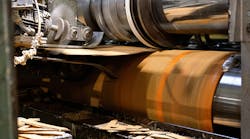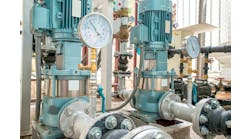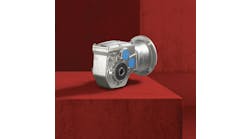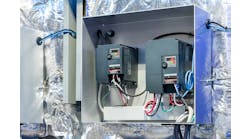With the economy starting to show signs of life here in North America, the specter that is COVID-19 is starting to feel like it is loosening its grip on our lives. While life outside of the work environment is re-awakening, life inside the work environment didn’t miss a beat. If anything, our ragged group of automation junkies has never been busier.
A more than casual side benefit of working for a company that provides an essential service is that demand for what we produce increased dramatically over the past 16 months. Complicating this greatly has been a large dip in the pool of staff to run the lines and, now, a negative impact in the guise of lack of supplies to make product. All of this makes sense as a global pandemic put the immediate brakes on much of the manufacturing sector and a rapid ramping up as life re-opens has caused a lapse between demand and supply. A nice benefit of this momentary gap is we get a chance to catch our breath before the next onslaught.
It is during this gap that my colleagues and I have had an opportunity to take yet another look at how we are doing our equipment controls upgrades. Gathering around the proverbial napkin, we had a chance to really dive into the impact that fewer resources, aka people, has meant to our team and our prospective output. Purely incidental, while our general workforce has dwindled over the past year, quite a few of our key people have arrived at retirement. With what seems like every single business now trying to hire or rehire people, we are faced with the very real problem of just not being able to pull in skilled people to replace these long-time employees who have finally reached the golden years. Faced with the same expectations as far as new production lines and vintage equipment replacement/rebuilds, we have had to re-evaluate how we go about things from a design standpoint, with the emphasis on re-engineering the solution to use a smaller workforce to get the same or more work done.
From an automation standpoint, we have finally decided to jump in with both feet and embrace distributed I/O on our machines. Now this might seem like a strange admission in 2021, but, for our needs, distributed I/O never really came up in conversations. We are pulling controls off 60-year-old packaging machinery, and, while using modern components, we have just wired them up the same old way.
It suited our needs, and it was familiar to the people who, in some cases, have been operating and maintaining these machines for 40 or more years. As the collective age of our workforce has increased and is now stepping off into post-work life, we have a new generation coming in that isn’t tied down by years of doing the same thing.
In the spirit of this new direction, an opportunity came up that made us rethink the driving force of our packaging machinery.
Traditionally, our rebuilds of horizontal packagers—pouch makers—and horizontal and vertical cartoners involve simply modernizing the VFD-driven versions of yesteryear. However, we recently took it upon ourselves to rewrite the software for a previously converted horizontal packager that we had an outside company do for us.
That machine used servo drives and broke out the three main machine functions into individual servo axes that cammed up to follow the main cycle shaft. Our rewrite simplified the OEM code and we’ve had rave reviews from our work mates on the form and function of the newly revised control system.
Following this success, in a meeting called by our ownership group to evaluate how we can get more production with a limited workforce, one of the key observations was the impact that automated pouch placers and collaborative robots to palletize production have had on our bottom line. To paraphrase the commercial for a hot sauce product, it is our intent to put that “stuff” everywhere.
The challenge then is how does one put new machine technology on 60-year-old, or even 30-year-old, machines. Well, in some cases, you really can’t.
In a bold proposition, I suggested that I might be able to take one of the kits that were purchased to be a horizontal packager upgrade, with the servo drive previously mentioned, and make it a horizontal cartoner upgrade instead.
We really don’t need the sophistication of a servo to drive a horizontal cartoner; we are not splitting off any functions to multiple axes. But the distinct advantage would be that we would use the same control components and either produce a cartoner or a packager as needed. Had we really just come up with a truly modular control design?
Let’s take a look at what went into our VFD-driven cartoner design. We would need a variable frequency drive, an inverter duty motor and a means of feedback to trigger operations such as bar code scanning, carton coding or flap gluing.
If we were to use a servo instead of a stand motor with VFD solution, we would still need a drive and motor, but the feedback would automatically be included because a servo is a closed-loop control system.
One of the drawbacks we had with our VFD solution is we also had to add a pseudo-jam detection system to detect carton/product jams so that we didn’t suddenly stop and load up the chains moving the product through the machine.
The shock relay we employed was designed to detect load on a chain and comes from the chain manufacturer, but it really wasn’t designed to be used as we use it. It basically provides a means of setting a maximum current draw over an adjustable duration and use that to drop out a relay that is in series with the VFD output.
The major setback to this attempt at having torque feedback is there is a very fine line between the current required to get the cartoner in motion and the current rise that will happen when the main drive is locked up on a product or component jam.
The challenge is amplified by the gearbox between the motor and the driven device as that multiplies the torque output but does little to the current required to drive the machine. Suffice to say that this hasn’t worked as well as we had hoped.
Summing up all this, the cost of a VFD, motor, encoder, shock relay and all associated wiring brings the investment very close to the cost of a servo drive and motor. The servo utilizes feedback and also provides true torque feedback with a means to cut out and alarm on torque overload, which is a much shorter response time than the shock relay of the VFD solution.
All in all, this solution seems so simple that we find it hard to imagine why we didn’t pursue it years ago. In our defense, it is human nature to keep doing what you have been successful with, and it is inevitable that we only depart on a new path when the one in front of us becomes blocked. A smaller pool of people to do the work became the roadblock that sent us off on a new path.
One great sidebar to all this is my team has come up with a way to build the same control system for multiple applications, and that means the code is very similar, as well. Broken down into modules, it takes far less time to put the whole thing together than we previously experienced.
One can’t help but wonder what the OEMs of the original equipment would think if they knew that a horizontal packager and a vertical cartoner were practically the same machine from a control standpoint.
We’ve even made the HMI applications virtually identical since we like to keep the main control buttons—stop/start/reset—physical. Our final benefit is that if we prebuild the main power and control panels, as well as the three on-machine point I/O stations, we can execute a complete controls rebuild in just three weeks. Considering that we have a team of three doing most of this work, this is quite an achievement.
While many are still in the grips of a pandemic, it is important to remember that most technological advancements happened because there was a need. Our need was to do the same things we normally do with a significantly reduced workforce.
All is possible if we just put in the effort to color outside the lines of what we normally do. Wherever you are, I hope you are able to rise above the challenges, and someday soon we can collectively take in a breath of fresh air.






